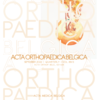Is annular repair technique useful for reducing reherniation and reoperation after limited discectomy?
annular repair; LDH; annular closure device; recurrent disc herniation; Barricaid; Anulex; Xclose
Published online: Jan 20 2023
Abstract
The annular defect because of the primary lumbar disc herniation (LDH) or surgical procedure is considered a primary reason for recurrent herniation and eventually reoperation. Efforts to close the defect with annular repair devices have been attempted several times, but the results were controversial. The present aims to detect whether the annular repair techniques were useful for reducing the re-herniation and re- operation rate. The Pubmed, Cochrane library, and Embase databases were searched to retrieve relevant studies published before January 1, 2021. Continuous variables were compared by calculating the standard difference of the means (SDM), whereas categorical dichotomous variables were assessed using relative risks (RRs). A random-effects model was used if the heterogeneity statistic was significant; otherwise, a fixed-effects model was used. A total of 10 researches were suitable for the meta-analysis, including four different repair techniques and 1907 participates. Compared with the control group, there was no statistical difference with the ODI, VAS-leg, and VAS-back scales for patients treated with the annular repair. However, using an annular repair device was associated with a significant reduction in the re- herniation (p=0.004) and re-operation (0.004) rates. There was no difference between the groups with perioperative complications. However, much more device-related long-term complications happened in the annual repair group (p=0.031) though it still decreased the overall re-operation rate significantly (p=0.006).Our results demonstrated that using an annular repair device was safe and beneficial for reducing re-herniation and re-operation rates.
